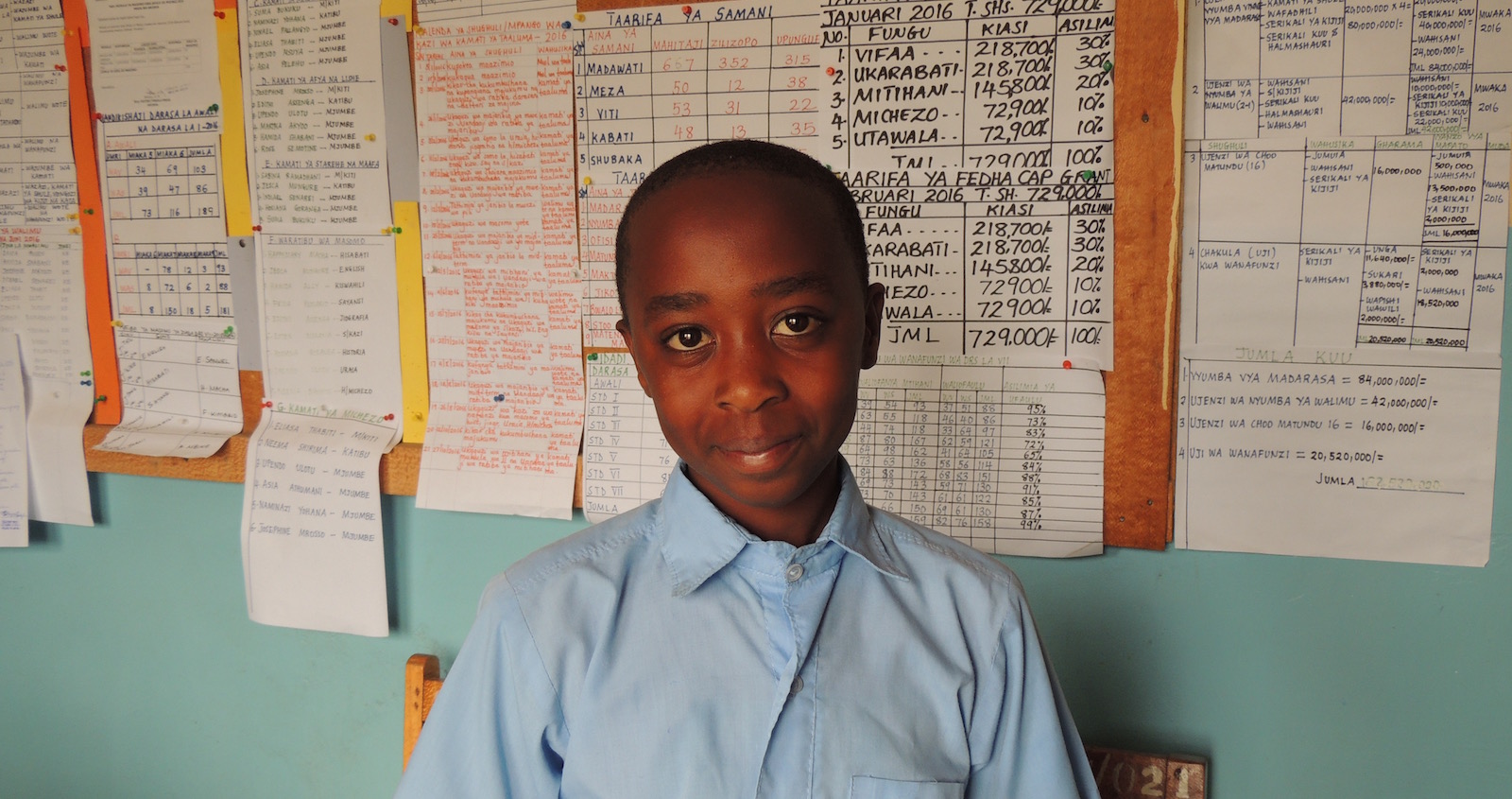Glory is one of the girls who attends Kambi ya Maziwa primary school, which is one of Unite 2 Learn’s three partner schools. She is 12 years old and is completing primary school next year. We met her to discuss the situation in the school, as well as potential problems.
We start talking a little about what she thinks is fun in school, and about her dreams. Glory tells that she likes math best, and that she wants to become a doctor when she grows up. During the breaks, she talks to her friends, and they usually do homework together. They often play with the skipping rope and play netball, which is a sport similar to basketball. It is played mainly by girls.
Something that Glory finds difficult in school is that the existing toilets are not in good condition. That is why she does not use the toilets, but waits until she comes home after the school day. It is common for the schools to have very few toilets, or none at all. The existing ones are in very poor condition, and there are many children who do the same as Glory and go to the toilet only when they come home from school. Many of the toilets that are available in the schools lack doors, and many only consist of tiny toilet cubicles. Often, there is no water in the schools to wash hands with after using the toilet. The lack of water and privacy in the toilet especially affect girls when they are menstruating. Since they are not able to change their sanitary pads in peace or wash their hands, many girls instead stay away from school during menstruation. The unsanitary toilets and the lack of hand washing opportunities with soap and water after using the toilet contribute to the spread of diseases such as cholera and diarrhea. These waterborne diseases are a major threat to children’s health. According to WHO, every day 800 children under the age of 5 die because of contaminated water and poor hygiene.
By ensuring that children have access to good hygiene, we can reduce the number of children affected. We are therefore using health education, promoting access to water at the schools and building well-functioning toilets to reduce diseases and increase school attendance.


